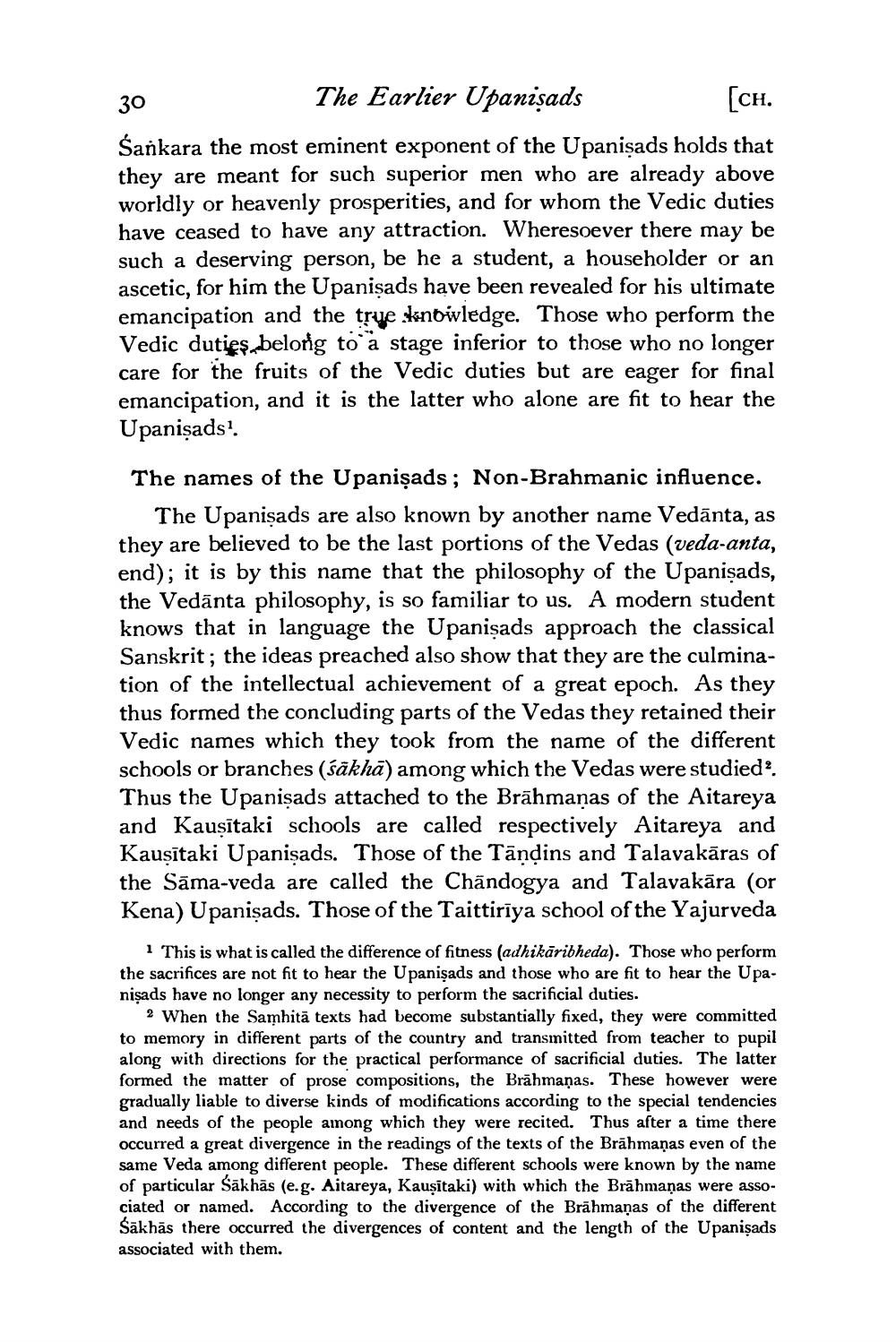________________
The Earlier Upanisads
[CH. Sankara the most eminent exponent of the Upanisads holds that they are meant for such superior men who are already above worldly or heavenly prosperities, and for whom the Vedic duties have ceased to have any attraction. Wheresoever there may be such a deserving person, be he a student, a householder or an ascetic, for him the Upanisads have been revealed for his ultimate emancipation and the true knowledge. Those who perform the Vedic duties belong to a stage inferior to those who no longer care for the fruits of the Vedic duties but are eager for final emancipation, and it is the latter who alone are fit to hear the Upanisads1.
330
The names of the Upanisads; Non-Brahmanic influence.
The Upanisads are also known by another name Vedānta, as they are believed to be the last portions of the Vedas (veda-anta, end); it is by this name that the philosophy of the Upanisads, the Vedanta philosophy, is so familiar to us. A modern student knows that in language the Upanisads approach the classical Sanskrit; the ideas preached also show that they are the culmination of the intellectual achievement of a great epoch. As they thus formed the concluding parts of the Vedas they retained their Vedic names which they took from the name of the different schools or branches (sākhā) among which the Vedas were studied2. Thus the Upanisads attached to the Brāhmaṇas of the Aitareya and Kausītaki schools are called respectively Aitareya and Kausītaki Upanisads. Those of the Tandins and Talavakāras of the Sama-veda are called the Chandogya and Talavakāra (or Kena) Upanisads. Those of the Taittiriya school of the Yajurveda
1 This is what is called the difference of fitness (adhikaribheda). Those who perform the sacrifices are not fit to hear the Upanisads and those who are fit to hear the Upaniṣads have no longer any necessity to perform the sacrificial duties.
2 When the Samhita texts had become substantially fixed, they were committed to memory in different parts of the country and transmitted from teacher to pupil along with directions for the practical performance of sacrificial duties. The latter formed the matter of prose compositions, the Brahmaņas. These however were gradually liable to diverse kinds of modifications according to the special tendencies and needs of the people among which they were recited. Thus after a time there occurred a great divergence in the readings of the texts of the Brāhmaṇas even of the same Veda among different people. These different schools were known by the name of particular Sākhās (e.g. Aitareya, Kauṣitaki) with which the Brahmaņas were associated or named. According to the divergence of the Brahmaņas of the different Šākhās there occurred the divergences of content and the length of the Upanisads associated with them.




